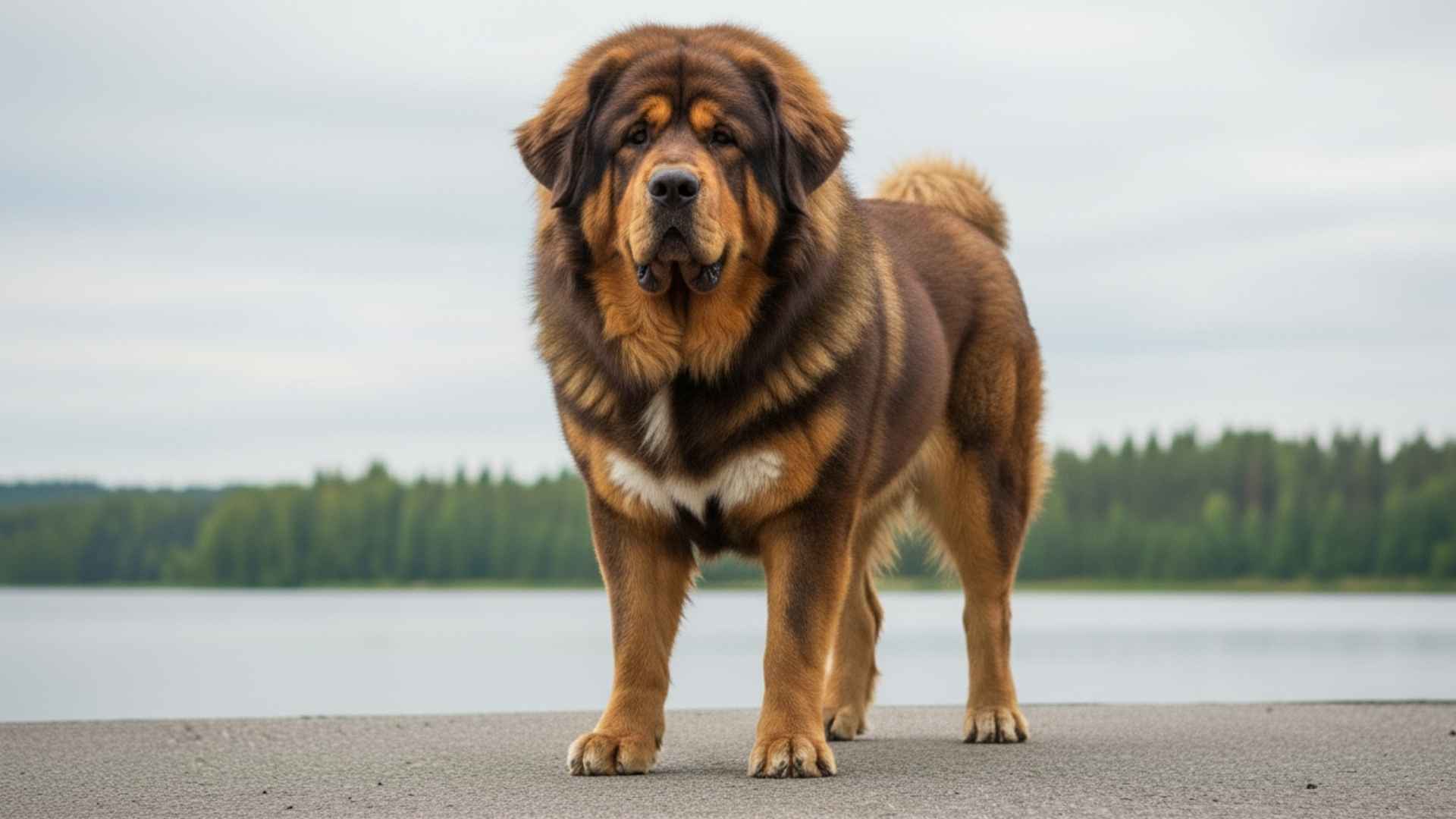When you picture raw power in a canine, you’re likely imagining massive jaws, broad chests, and muscles rippling under thick coats. These traits aren’t just for show — they were crafted by centuries of selective breeding for guardianship, war, and protection.
Did you know a 2025 study of over 47,000 dogs found that size is one of the few consistent predictors of behavior and physical resilience? That makes the giants of the dog world especially fascinating — not just for their looks, but for their sheer capability.
We’re diving into these big dog breeds. Each of these giant dog breeds blends size, strength, and purpose in a way few others match. In this post, you’ll meet the true heavyweight champions of the dog world.
Whether you’re a casual dog lover, a breeder, or just someone seeking a touch of awe, prepare to be impressed. These dogs don’t just look strong — they live strength.
Strongest Large Dog Breeds Ever Known
1. Mastiff
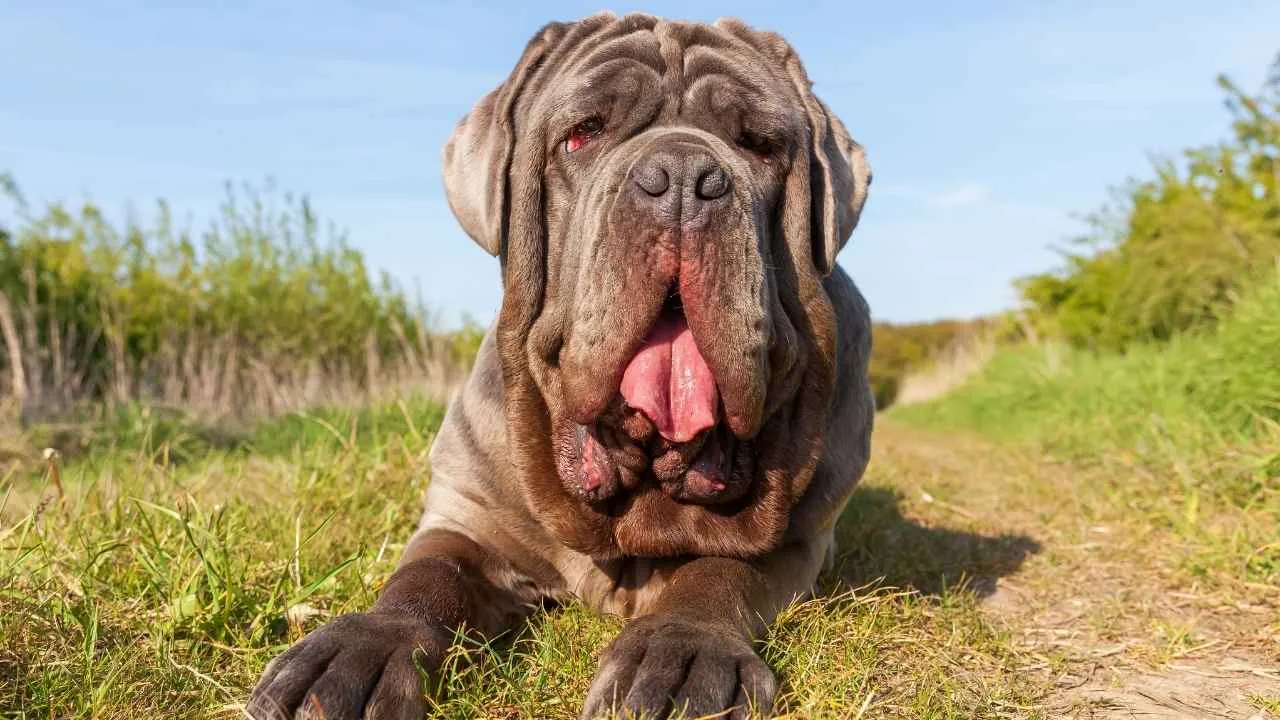
The Mastiff is often called the “gentle giant” of the dog world, yet it’s one of the oldest and strongest giant dog breeds ever known. With their colossal build and calm demeanor, these dogs are famous for loyalty and natural protective instincts.
Their short coat makes grooming easy, but their sheer size brings health concerns like hip dysplasia and joint stress. A balanced, protein-rich diet helps maintain strength while preventing excess weight that can strain bones.
Maturation: Slow to mature, fully grown at 2–3 years
Space Needs: Thrive in large yards, not ideal for small apartments
Care Cost: High, due to size, diet, and potential vet care
Despite their imposing presence, Mastiffs have moderate exercise needs — daily walks and playtime will keep them content. They respond well to consistent, positive training and benefit from gentle mental challenges that match their calm yet watchful nature.
2. Great Dane
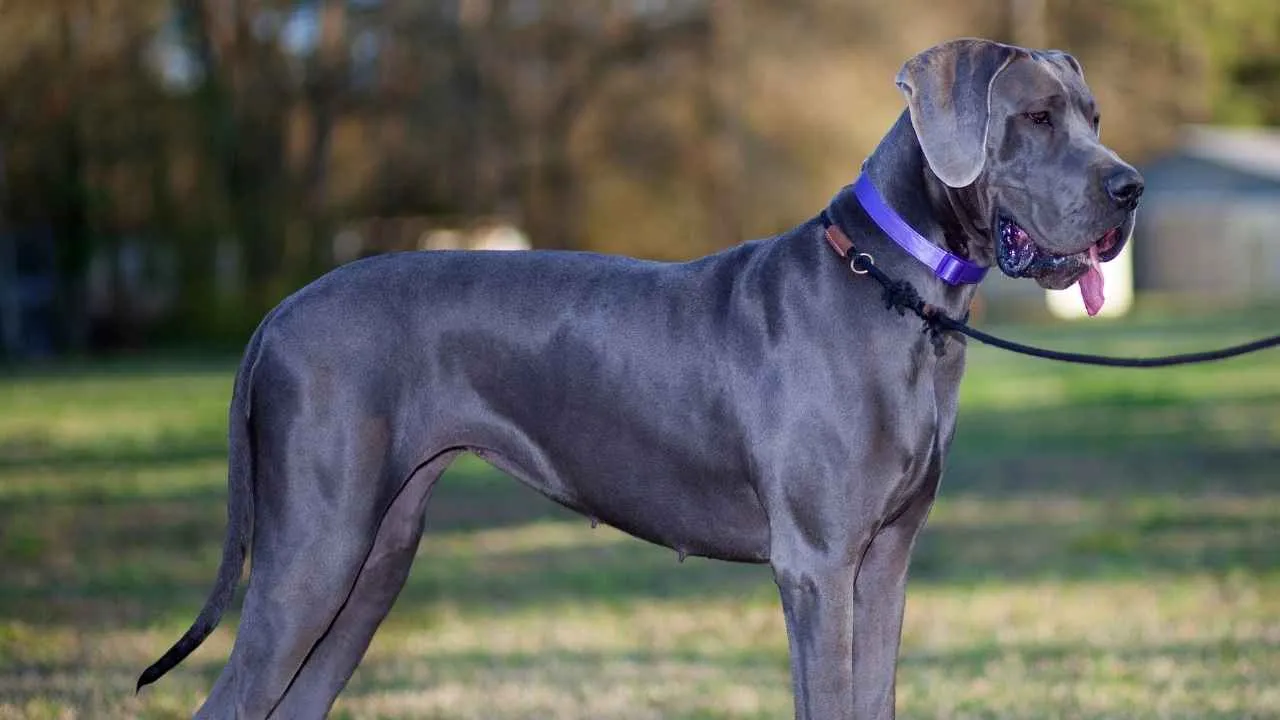
Nicknamed the “Apollo of Dogs,” the Great Dane stands tall, elegant, and powerful. Their commanding height makes them one of the strongest big dog breeds ever celebrated, but their affectionate personality surprises many first-time admirers.
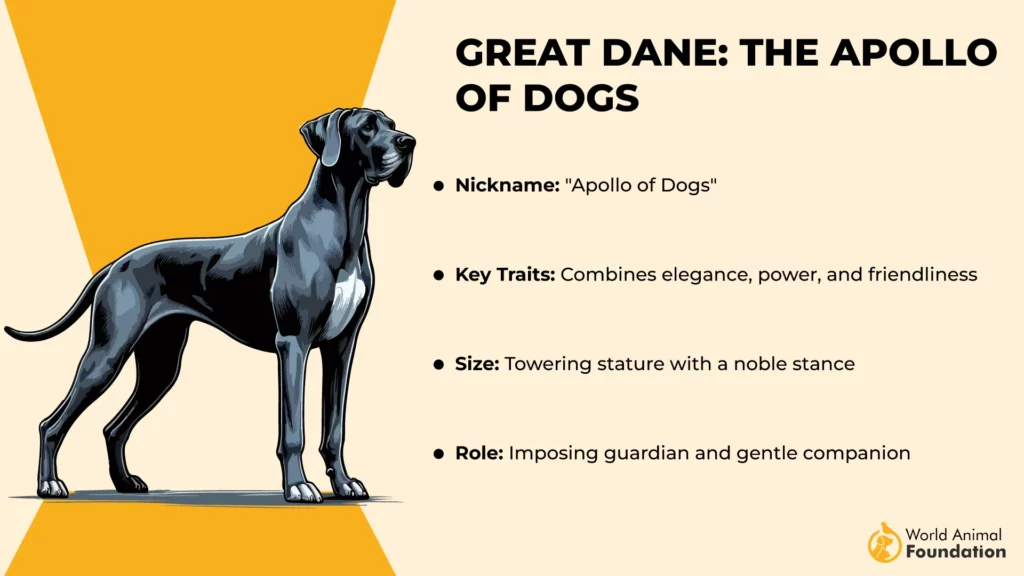
WebMD suggests that their short coat requires only minimal brushing, yet their size comes with health risks such as bloat and heart issues. They thrive on a carefully managed diet that supports lean muscle and protects their sensitive digestive system.
Maturation: Reaches full height quickly, fills out by 18–24 months
Space Needs: Large homes with room to stretch and lounge
Care Cost: High, given food intake and specialized veterinary needs
Great Danes are playful and thrive on interaction, but they don’t need extreme exercise. Instead, regular walks and moderate activity keep them healthy. Their gentle, people-pleasing nature means they respond wonderfully to early socialization and firm, kind training.
3. Tibetan Mastiff
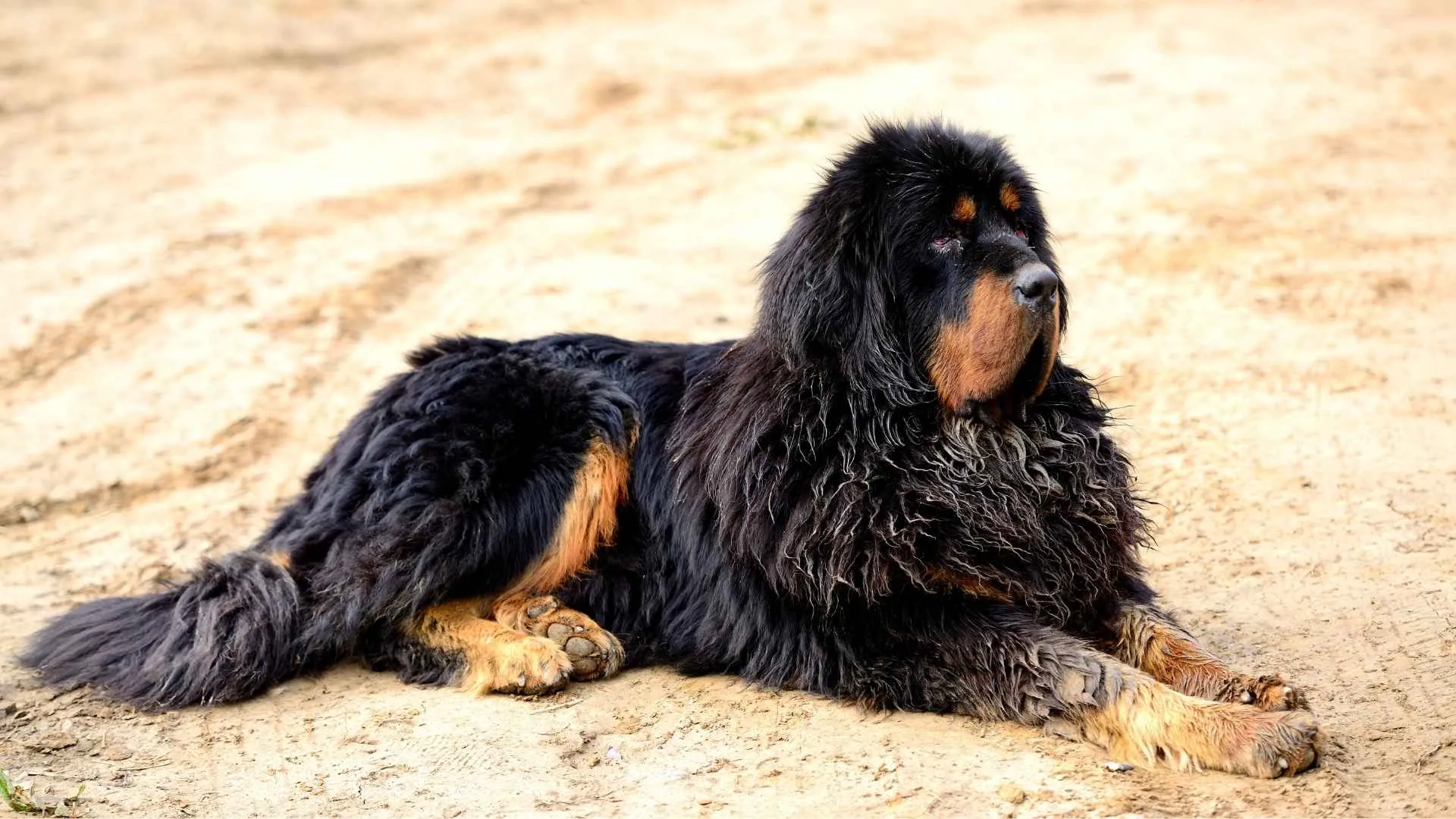
The Tibetan Mastiff is wrapped in myth and mystery, known as a legendary guardian of Himalayan villages. With their thick mane-like coat and lion-like stance, they are both majestic and among the most powerful dog breeds on Earth.
This breed’s heavy double coat demands regular brushing, especially during seasonal shedding. They are hardy dogs but prone to thyroid issues and hip concerns, so a nutrient-dense diet with supplements can make a huge difference in their long-term health.
Maturation: Extremely slow to mature, reaching adulthood at 3–4 years
Space Needs: Requires wide, secure areas to patrol
Care Cost: Considerable, due to grooming and specialized feeding
Independent and strong-willed, Tibetan Mastiffs need purposeful training and confident leadership. They aren’t high-energy sprinters, but they do need stimulating mental tasks and a chance to exercise their natural guarding instincts, making them best suited for experienced owners.
4. Irish Wolfhound
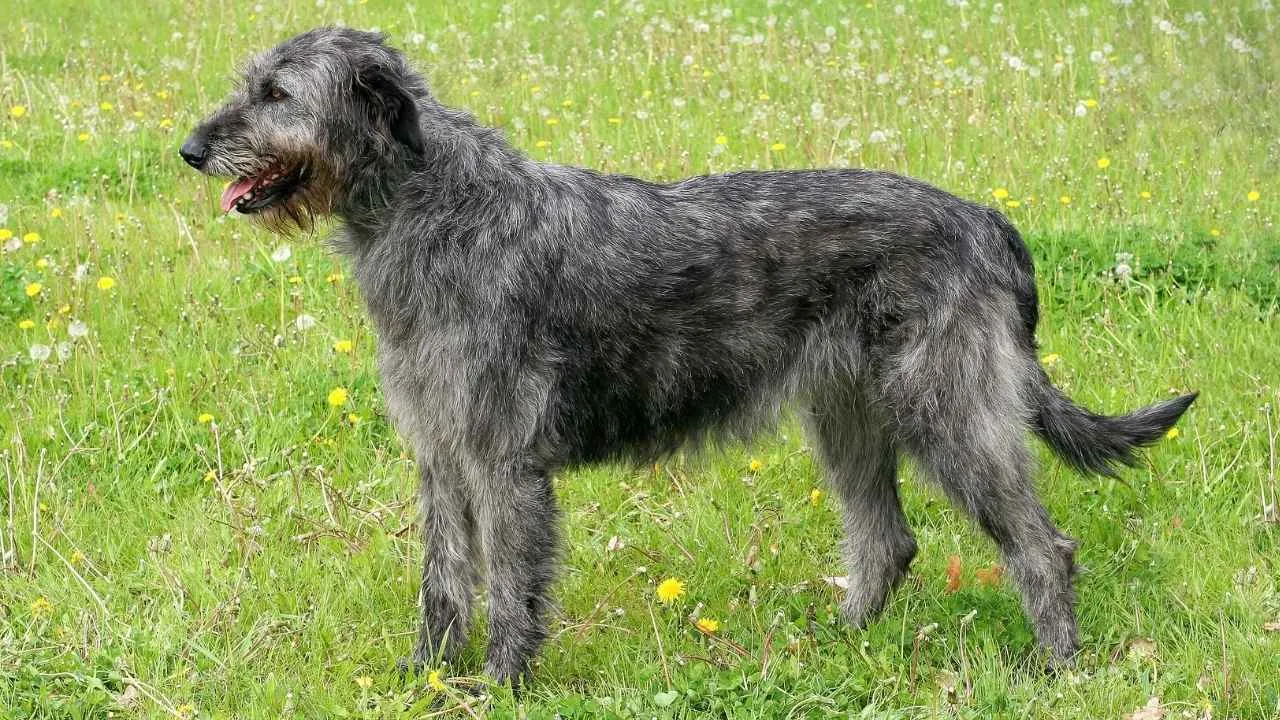
Known as one of the tallest dog breeds, the Irish Wolfhound was once bred to hunt wolves — a job that demanded immense strength, stamina, and courage. Despite their towering presence, they’re famously gentle and often called “gentle giants.”
Their wiry coat needs weekly grooming to avoid mats, and their large frame makes them prone to heart disease and joint issues. Feeding them multiple smaller meals daily is recommended to prevent bloat, which is common in deep-chested breeds.
Maturation: Rapid growth in the first year, full maturity around 2 years
Space Needs: Comfortable in spacious homes with access to outdoor play
Care Cost: High, due to food intake, preventive vet care, and supplements
AKC recommends that, though not overly energetic, Irish Wolfhounds need long daily walks and free runs in safe areas. They love companionship, and consistent, reward-based training helps harness their gentle yet powerful nature, keeping both body and mind engaged.
5. Anatolian Shepherd
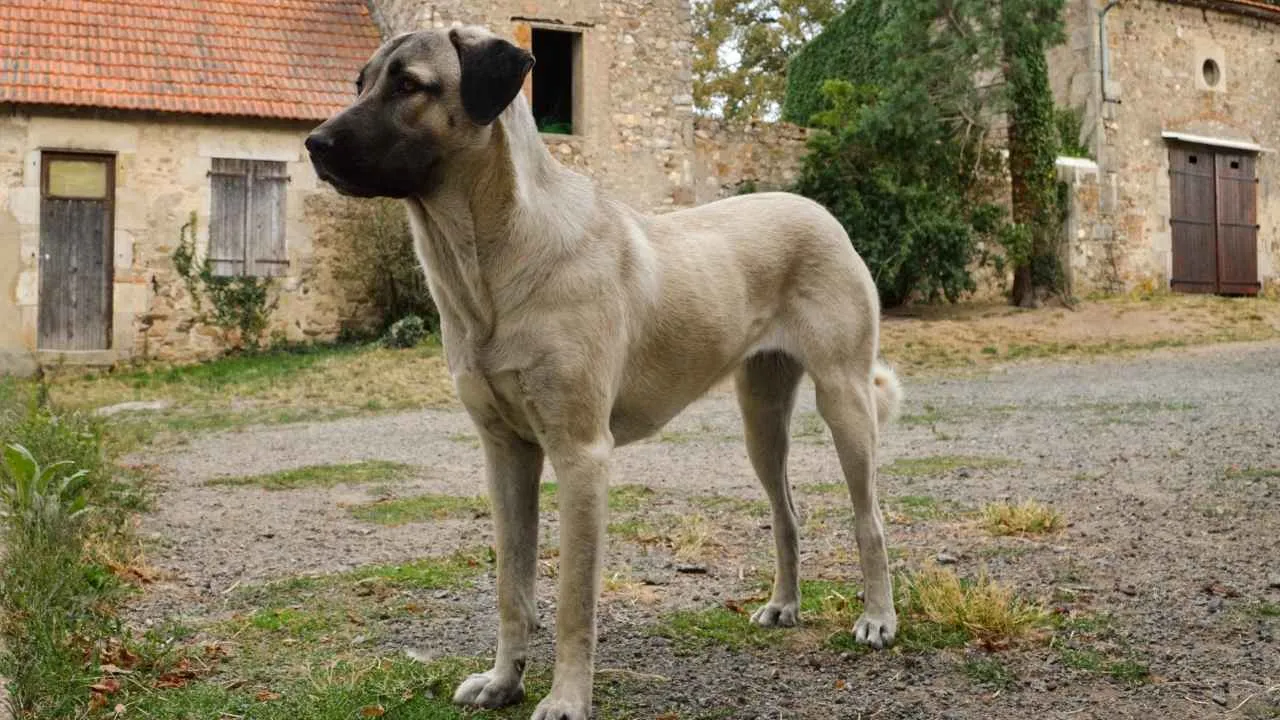
The Anatolian Shepherd is a living fortress — bred for centuries in Turkey to guard livestock against wolves and even bears. With keen instincts and a muscular frame, they’re one of the most formidable giant dog breeds ever known for protection.
Purina reveals that their short, dense coat is low-maintenance, but their health must be monitored for hip dysplasia and thyroid conditions. A diet high in lean protein and joint-friendly supplements supports their demanding lifestyle.
Maturation: Slow developers, reaching maturity around 2–3 years
Space Needs: Need wide, secure land or rural environments
Care Cost: High due to size, diet, and preventive vet care
This breed is not for casual owners — they require strong leadership, firm training, and consistent mental stimulation. Daily exercise paired with purposeful “jobs” satisfies their working spirit and helps channel their intense energy.
6. Cane Corso
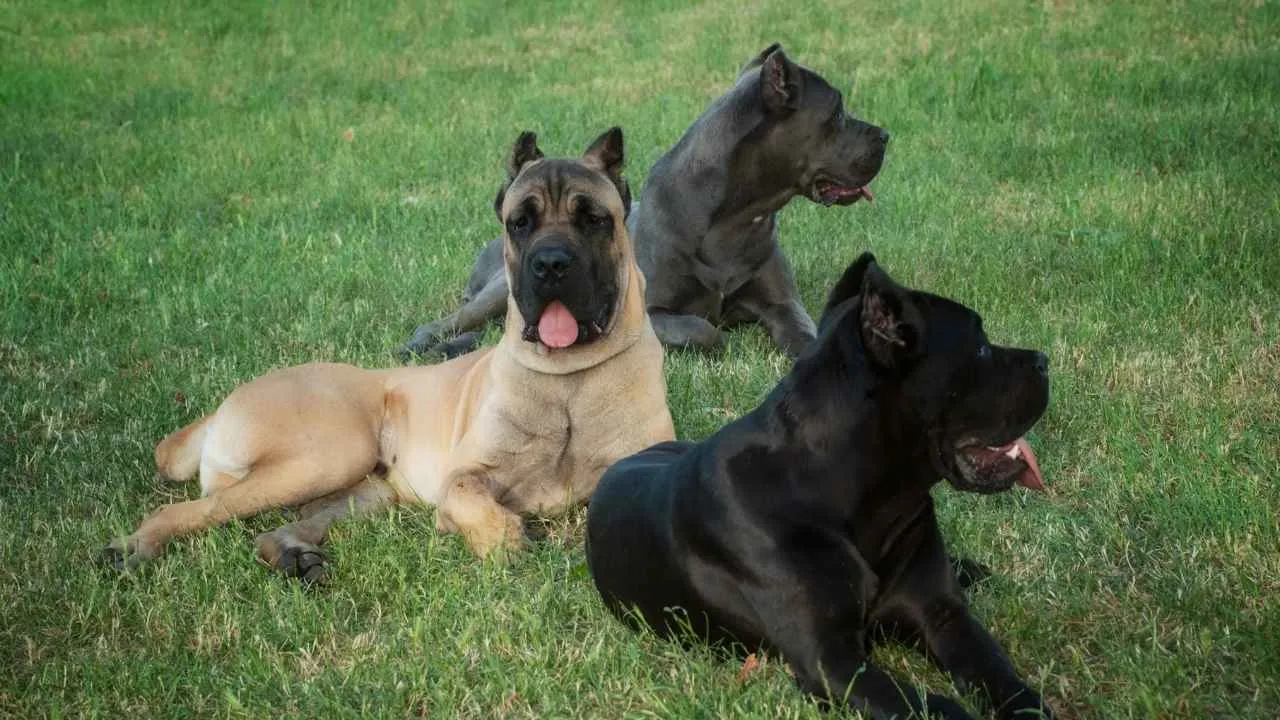
With a lineage tracing back to ancient Roman war dogs, the Cane Corso combines strength, intelligence, and elegance. They’re often called natural protectors — powerful enough to be guardians, yet loyal companions to their families.
Their short, glossy coat is easy to maintain, but their muscular build means monitoring joint health and weight is critical. They thrive on a protein-rich diet tailored to support active working breeds.
Maturation: Reaches maturity around 18–24 months
Space Needs: Adaptable to large homes with yards
Care Cost: Moderate to high, mostly food and training-related
Cane Corsos are intelligent and eager to learn, making them highly trainable when started young. They need daily workouts — brisk walks, agility drills, or structured play — paired with mental challenges like obedience or scent games to keep their minds sharp.
7. Alaskan Malamute
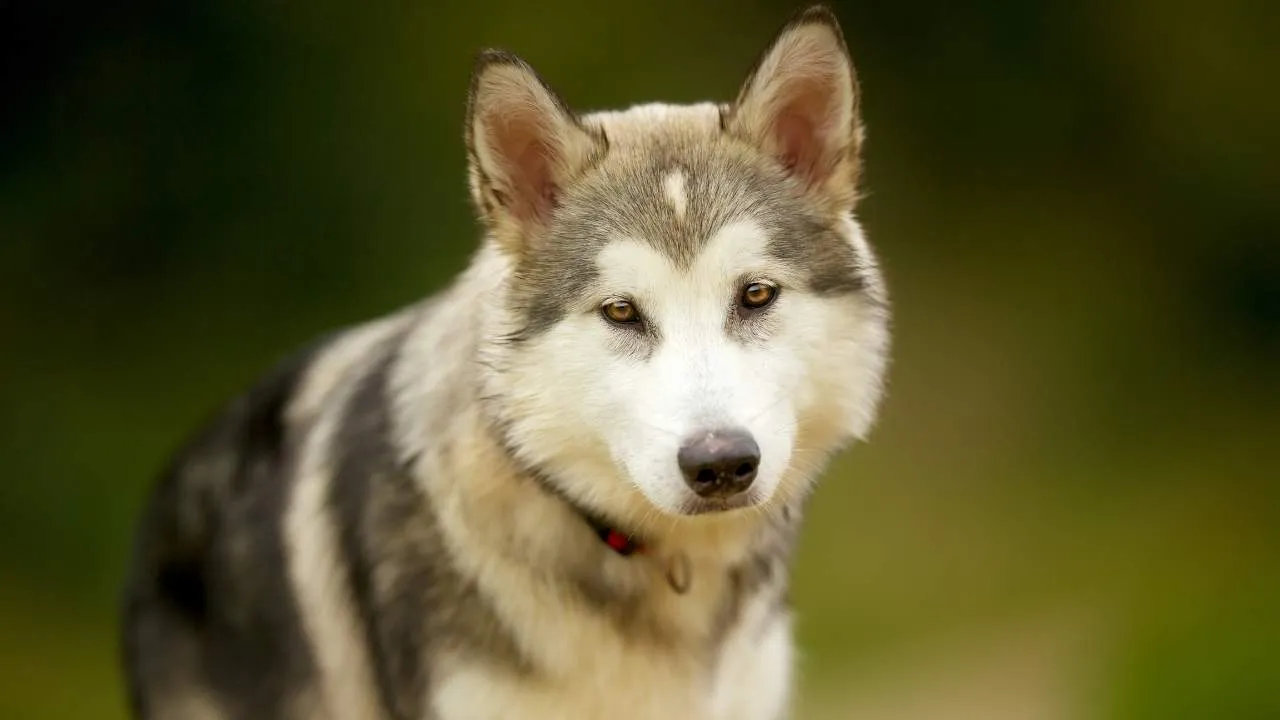
The Alaskan Malamute is a powerhouse bred for endurance, originally used to haul heavy sleds across frozen terrain. Their strength, stamina, and pack-oriented nature make them one of the most admired large working dogs ever known.
Their thick double coat requires frequent brushing, especially during shedding seasons. While they’re generally hardy, owners should watch for hip issues and hypothyroidism. A diet rich in protein and omega-3s helps maintain their energy and coat health.
Maturation: Fully mature at 18 months–2 years
Space Needs: Thrive in cooler climates with ample outdoor space
Care Cost: Moderate to high, especially for grooming and exercise needs
Malamutes are energetic and thrive on adventure — they love pulling, hiking, and long runs. Training should focus on positive reinforcement, as their independent streak needs consistent guidance and plenty of mental enrichment.
FAQs
1. Are these powerful breeds aggressive by nature?
Not at all — most giant breeds have a gentle nature and can be excellent family dogs. With early training, consistent socialization, and proper guidance, they grow into calm family pets that are protective but not aggressive.
2. Do the strongest large breeds need special care or diets?
Yes, due to their imposing size, mastiff breeds and other large dogs benefit from joint-friendly diets and portion control to stay healthy. Regular vet checkups, proper training, and enough room to move help extend their life expectancy.
3. Can these strong, large breeds adapt to apartment living?
While some intelligent breeds may adjust, most of these dogs need a fenced area or larger spaces. They were originally bred to cover long distances or guard farms, so giving them space ensures they remain happy and healthy family members.
Conclusion
The strongest large dog breeds ever known were originally bred as guardian dogs, farm dogs, and even rescue dogs. These giant breeds carry a long history of protecting loved ones while forming strong bonds with pet parents.
Alongside the Mastiff, Great Dane, Tibetan Mastiff, Irish Wolfhound, Anatolian Shepherd, Cane Corso, and Alaskan Malamute, other dogs like the Saint Bernard, French Mastiff (Dogue de Bordeaux), Great Pyrenees, Bernese Mountain Dog, and Neapolitan Mastiff also stand out. Their imposing size, lion-like mane, or even floppy ears make them unforgettable.
With proper training, consistent socialization, and enough room to roam, these family dogs stay healthy and become excellent family pets. Every intelligent breed deserves early training and care to thrive in family life — and to bring joy to children and family members alike.


